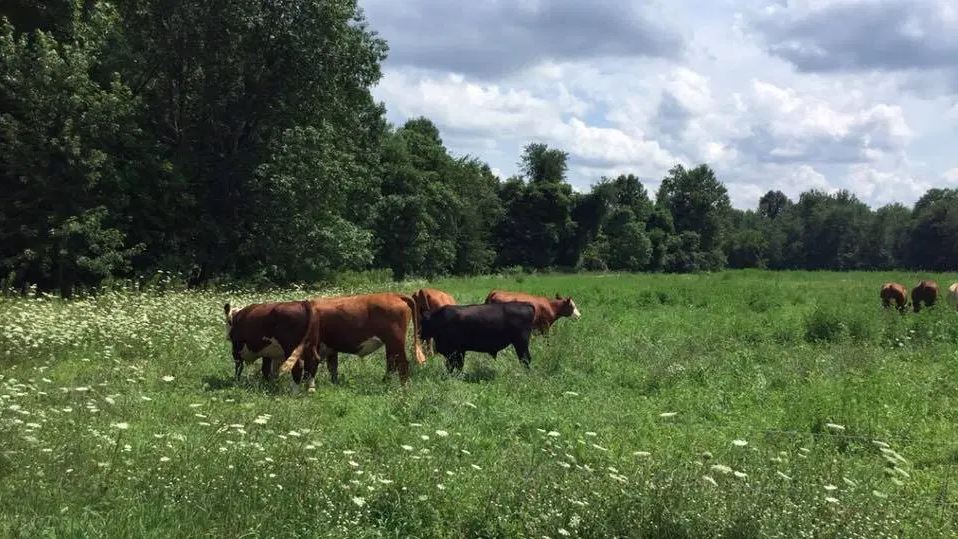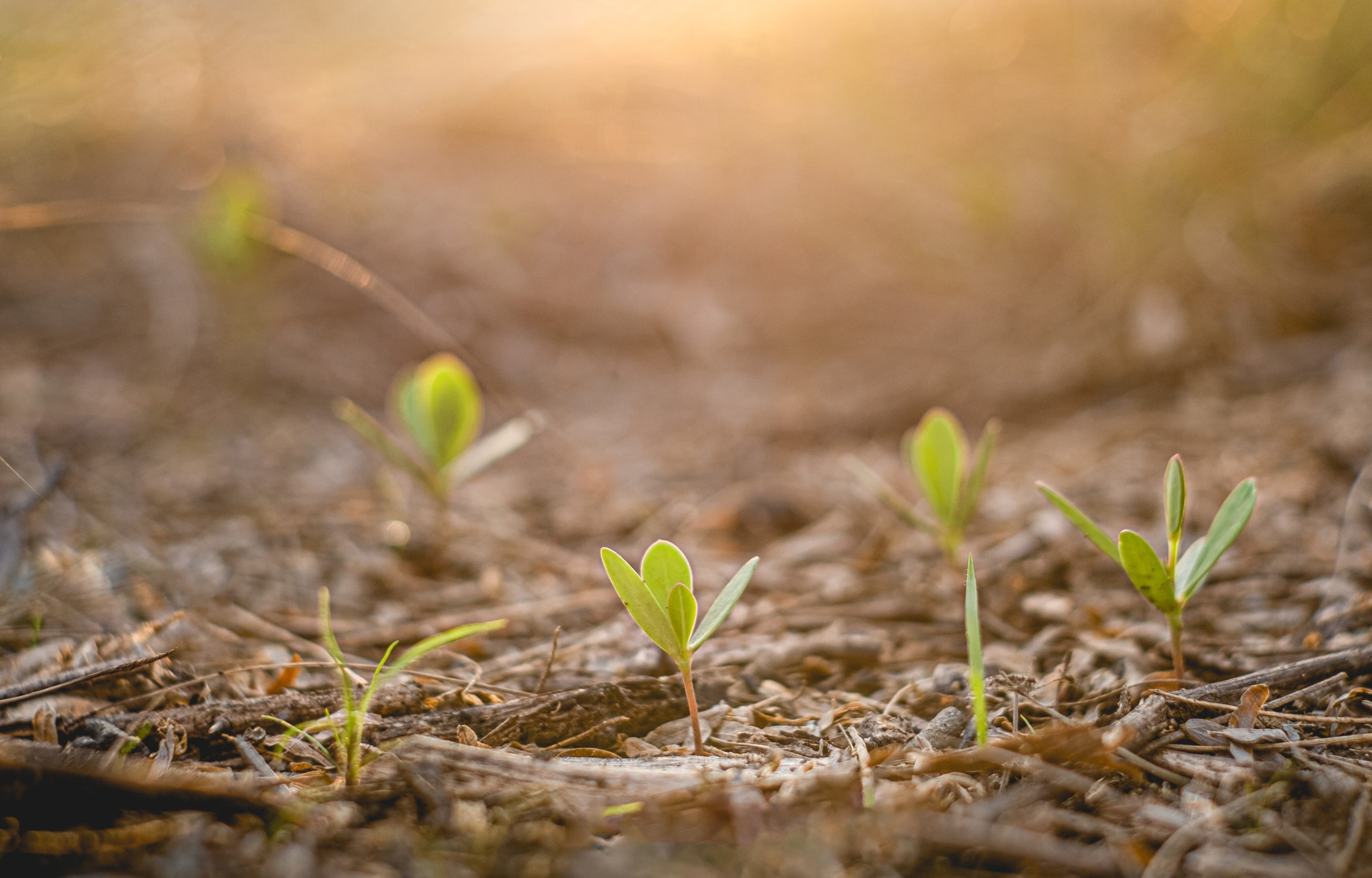Based on a conversation with Whitney Carpenter, vice president of Monadnock Community Land Trust

“Securing the future of this land is really important. Projects like this create a foundation for a localized food system.”
—Steve Normanton
In June 2021, the first farm was transferred into the New Hampshire Agrarian Commons. The 63 acres of farmland were a gift: the Monadnock Community Land Trust (MCLT) donated the land to the Agrarian Commons so that it could continue to be protected for farming. Normanton Farms, who now holds a 99-year lease on the land, is a regional leader in intensive rotational grazing, raising grass-fed cattle, free-range hogs, and pastured chickens for direct community sales and regional distribution.
“That was a land trust’s dream,” said Whitney Carpenter of Steve Normanton’s regenerative farming. “To take a piece of land, just put a fence around the whole thing, and just graze it and let it improve naturally. Steve went one step further and brought in crops to improve the soil.”
The land where Steve Normanton is currently farming is unique in many ways.

As Whitney described it, “There are four different benches, level spots along the river. Inland it’s higher, and then higher again until you come up to where the highway is. All that land has different characteristics. Over the last few hundred years it was forest, and organic matter piled up from the forest. Eventually after the colonists cleared the forest, soil washed away until it was only a few inches deep. Down near the river, the soil quality was pretty low when we [at Monadnock Community Land Trust] took over. Steve has been building that up, and in some places he’s actually got the soil six inches deep. Restoring farmland is a long-term process.”
The donated farmland has a storied history. In the 1970s, it operated as an organic farm raising food for the Boston Food Bank. Eventually, the farm diversified to sell to high-end markets. Over that time, the land’s longtime owner sold its development rights to the state of New Hampshire and donated the farmland to the then three-year-old MCLT.
“Monadnock Community Land Trust formed in 1978 with a mission to support affordable housing, land conservation, and education on those two subjects,” Whitney explained.
The first summer conference for Northeast Organic Farmers Association was held in 1975 in Wilton; Wendell Berry attended, and Susan Witt, who went on to co-found Schumacher Center for a New Economics, was a teacher at the local Waldorf school where Gary Hirshberg and Samuel Kaymen would co-found Stonyfield Yogurt in the early 1980s. The MCLT was and is part of this movement toward local governance and responsible land stewardship.
“The land trust here in Wilton, we have just under 100 acres of land here. This is about half of an old dairy farm that had gone up to the woods. In the 1980s, the area was threatened by development; people were buying land to build lodges. This farm was owned by a guy who lived in California who was doing large scale organic dairy farming. He happened to own this piece of land and he did not want to see it developed.
He didn’t have any reason to keep the land. He was persuaded by his own heart and by people around here who were relatively poor, they were teachers, people who didn’t have much income. They decided to form a land trust, to purchase half the farmland to build houses for themselves. They were able to do this with the help of the Society of Friends [better known as the Quakers], who helped with legal work and the idea of forming a land trust and then leasing house sites to folks who couldn’t afford to buy a piece of land or put in a well themselves.”
This strategy—holding land to ensure affordable housing—is now common among community land trusts, which exist as community-run nonprofits that acquire and manage land parcels in service of a community. But the Monadnock Community Land Trust remains unique for its commitment to ecological stewardship and protection of land for farming.
“This community got together with people at the University of New Hampshire who were working on conserving land mostly, but also creating opportunities for affordable housing. With that help they formed the land trust, and through that raised funds to purchase the farmland,” Whitney said. “They mapped out building sites . . . basically twelve homes only on about 12.5 acres of the land. The rest is all forest, which is being protected. And the cost of the forest is being paid by the people who live here. . .
Homeowners lease their homesites from the community association and the association leases the whole parcel from the land trust. Everybody who lives here belongs to both and contributes to it, both financially and physically. We maintain the water and sewer systems, all the things that a small community needs to survive, we do it ourselves. And we’re still doing it.
They each own their own home, they don’t own the land. But they’re responsible for caretaking a certain radius right around their house.”
The Agrarian Commons draws inspiration from the community land trust model, buying and holding farmland in service of communities around the US.
“It’s made difficult with the legal system in the US. My wife and I were the first ones who got a house here with a mortgage. Now practically all the homes here are financed by mortgages, and that’s because the nationwide land trust movement and community land trust movement reached such proportions that Congress allowed Freddie Mac and Fannie Mae to lend for the purchases of houses on leased land. Many banks today will not lend on leased land.
So it was kind of a nationwide movement that began in the 1970s . . . and the result is that now it’s reached maturity and that community land trusts are a valuable part of the affordable housing and land protection movement.
Now [director of Agrarian Trust] Ian McSweeney is taking this to a much greater level by forming a network of farm-protecting entities.
That is the voice of the future.”
The 63 acres donated from the MCLT to the New Hampshire Agrarian Commons will be held in perpetuity for farmers, like Steve, who consider soil, ecosystem, and community health. Since the farm’s transfer into the Commons, students at the local elementary school are learning to grow food at community gardens on the land. Local residents and visitors use community trails that run through the land. Community members connect to the land and farm at community events.
“Now,” Whitney said, “the farm is connected up with a national organization with the same values and mission [as the Monadnock Community Land Trust]. It’s a very heartening thing to have lived through. My hopes have been realized.”





